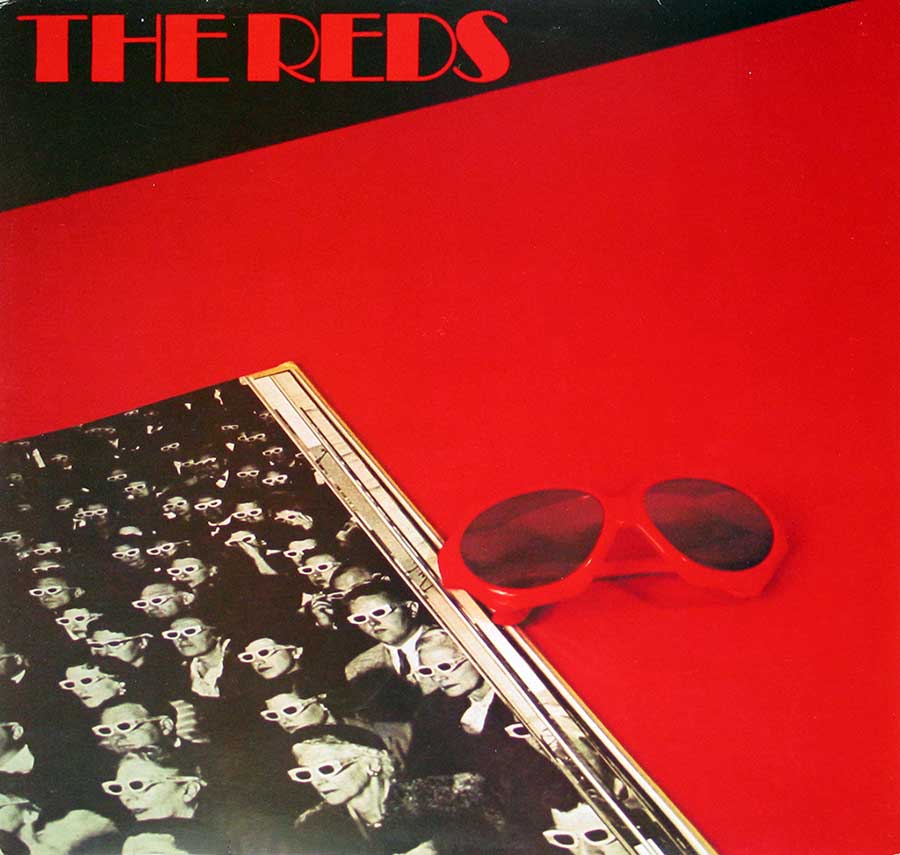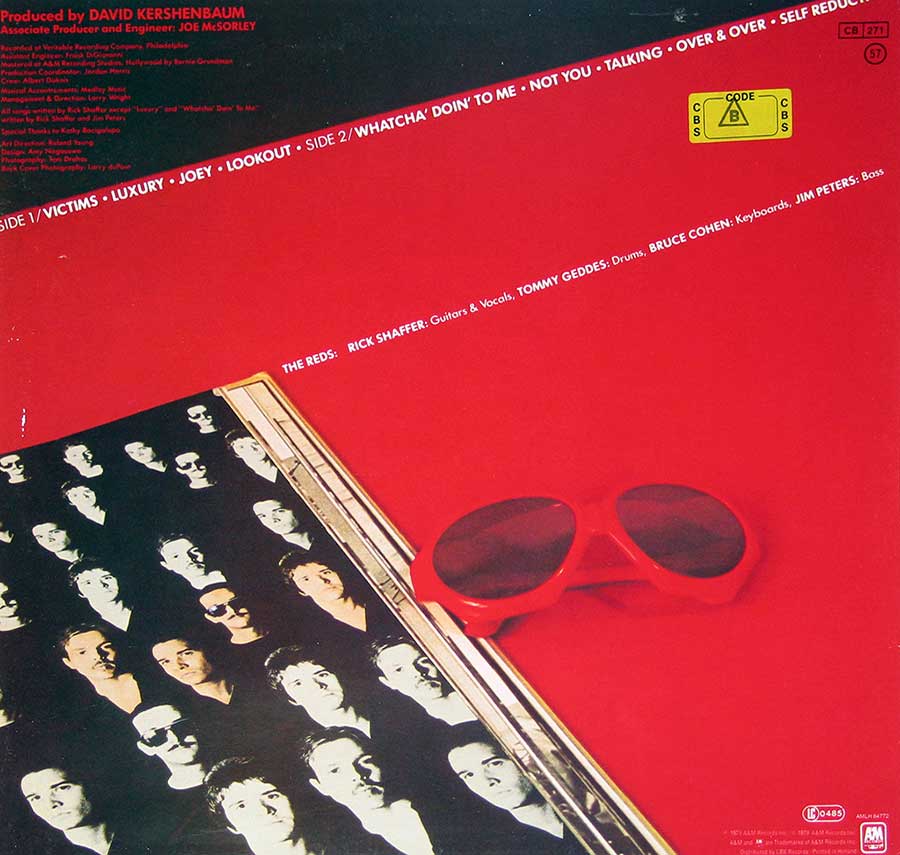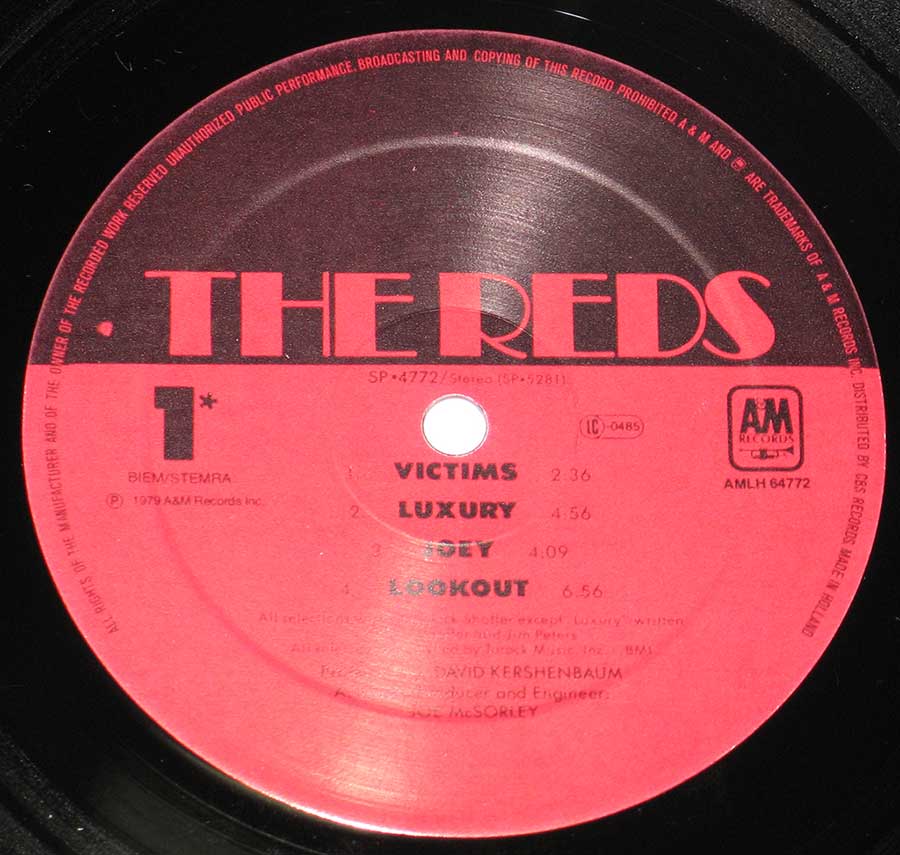The Reds (1979): A Raw and Relentless Debut
Historical Context: A Band on the Edge of a Revolution
In the waning years of the 1970s, as punk rockÕs snarl gave way to the colder, more calculated rhythms of new wave, The Reds emerged as a band unwilling to be easily categorized. Their self-titled debut album, released in 1979 under A&M Records, arrived at the intersection of rebellion and reinvention. By then, the frenetic energy of the Ramones, Sex Pistols, and The Clash had already detonated the rock world, while artists like Talking Heads, Joy Division, and The Cure were shaping the post-punk aesthetic that would dominate the early Ô80s.
The Reds did not conform strictly to either movement. They existed in a liminal space, drawing from punkÕs immediacy while embracing a more atmospheric and cinematic approach. Their debut was a testament to this duality, a jagged and unrelenting record that reflected the urban paranoia and existential angst of the time.
Musical Exploration: A Collision of Punk, New Wave, and Cinematic Drama
At its core, The Reds is a dark, propulsive album. It moves with the speed and aggression of punk but lingers with the eerie introspection of post-punk. The jagged, slashing guitar lines of Rick Shaffer, combined with Bruce CohenÕs brooding keyboards, created a stark contrastÑa battle between raw energy and calculated menace. Tracks like "Joey" and "Victims" brim with nervy urgency, while "Luxury" slows the pace to an almost hypnotic sway, evoking the same nocturnal unease that would later define the work of bands like The Psychedelic Furs.
Vocally, Shaffer delivers with a commanding, almost desperate intensity. His voice never fully sneers in the way of Johnny Rotten or snarls like Iggy Pop, but instead carries a certain detached alienation, a voice both inside and outside the chaos. The drumming is relentless, keeping time like a ticking bomb, while the bass rumbles with a controlled but forceful presence.
Music Genre: An Anomaly Between Punk and Post-Punk
While The Reds are often classified under punk and new wave, their debut album suggests something more elusive. ItÕs too melodic for pure punk, too urgent for full-fledged post-punk, and too menacing for the clean lines of new wave. Their sound echoes the likes of SuicideÕs minimalistic dread and The DoorsÕ theatrical darkness, yet maintains a rock backbone that keeps it from drifting too far into experimental territory.
The albumÕs sonic landscape hints at the cinematic, making it no surprise that The Reds would later find their way into film soundtracks. Their music feels like it belongs in a crime noir drenched in neon light, where paranoia and intensity are indistinguishable from reality.
Controversies: The Struggle for Recognition
Despite their distinctive sound, The Reds struggled against the tide of commercial viability. Punk had been co-opted into a marketable rebellion, and new wave was increasingly polished for radio-friendly consumption. A&M Records, despite signing the band, did not seem to fully understand how to market them. Were they a punk band with art-rock tendencies, or were they a moody new wave outfit with a raw edge? The confusion led to a lack of clear direction in promotion, and as a result, the album failed to break into the mainstream.
There were also tensions in how their music was perceived. Some critics dismissed the album as too chaotic for radio but not aggressive enough for the hardcore punk audience. Others recognized its potential but struggled to place it in the existing musical hierarchy. The bandÕs refusal to neatly fit into a category became both its strength and its curse.
Production Team and Recording Studio: The Sound Behind the Fury
The RedsÕ debut was produced by David Kershenbaum, who was known for his work with Joe Jackson and other emerging new wave acts. His production style was clean but not overly polished, allowing the raw intensity of the band to come through while maintaining clarity in the mix. Kershenbaum understood how to balance the aggression of the guitars with the eerie undercurrents of the keyboards, ensuring that neither element overpowered the other.
The album was recorded at The Sound Factory in Los Angeles, a studio known for its versatility. The space provided the band with the technical precision needed to capture their controlled chaos. Unlike some punk records of the time, which thrived on lo-fi grit, The Reds had a sharpness that allowed its layers to be fully appreciated. The guitars were jagged but distinct, the keyboards haunting yet textured, and the rhythm section relentless but never muddled.
Differences in Other Releases
There were slight variations between different releases of the album, mostly in terms of mixing and track arrangements. Some pressings had subtle differences in production values, particularly in how the keyboards sat in the mixÑsome versions emphasized the cold, detached atmosphere more than others. Additionally, certain editions of the album included alternative versions of tracks, with minor tweaks in instrumentation and vocal layering.
Final Thoughts
The Reds (1979) was a record out of timeÑa work that hinted at the future yet remained anchored in the restless urgency of its era. It was too fierce for mainstream new wave but too refined for the reckless abandon of punk. In its sonic landscape, it painted a picture of paranoia, tension, and unrelenting energy. Though not widely celebrated in its time, it remains a testament to a band that refused to be easily defined, and in doing so, crafted a debut album that stands as a haunting, electrifying snapshot of a transitional moment in rock history.


